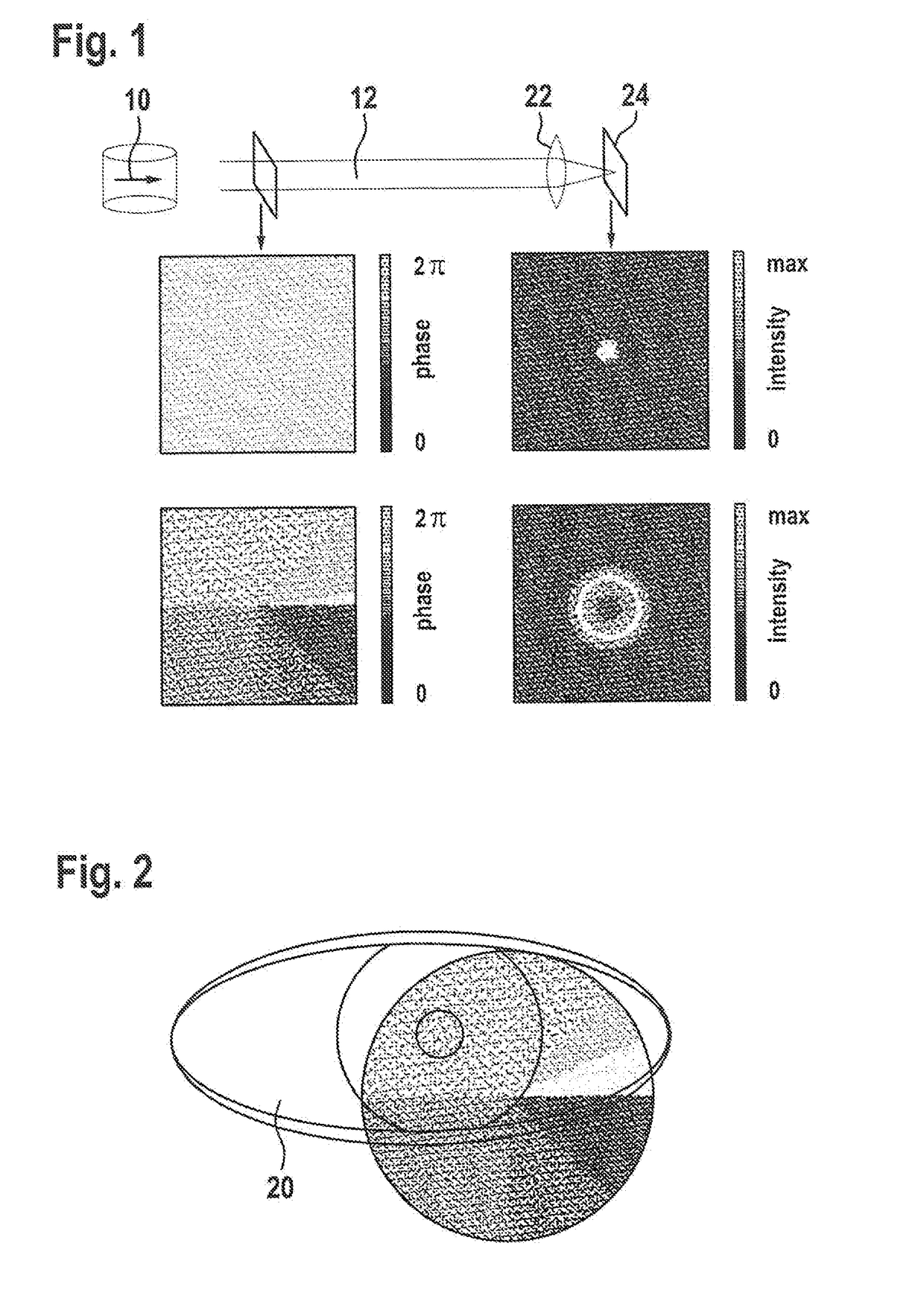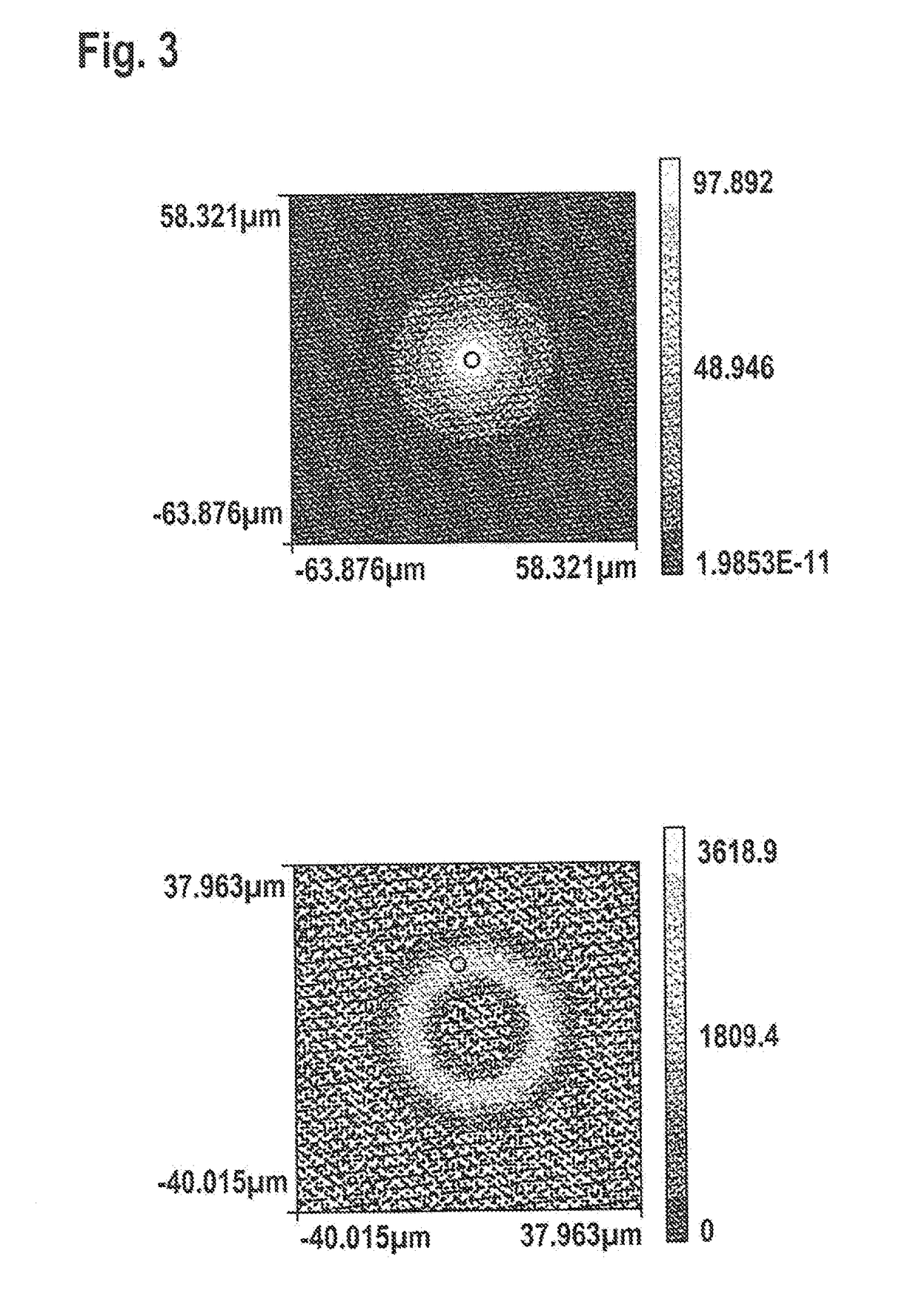Lidar system
a technology of sliding system and laser power, applied in the field of sliding system, can solve the problems of limited sliding system, inability to detect photons and evaluate reflected signals, and the possibility of not being able to arbitrarily increase laser power, etc., to achieve the effect of avoiding or avoiding
- Summary
- Abstract
- Description
- Claims
- Application Information
AI Technical Summary
Benefits of technology
Problems solved by technology
Method used
Image
Examples
Embodiment Construction
[0035]FIG. 1 shows phase fronts of collimated beams and intensity distributions after focusing, using the example of a Gaussian beam (top) and a higher-order Laguerre-Gaussian beam according to the present invention (bottom). Moreover, a LIDAR system including a laser radiation source 10 for generating coherent laser radiation 12 is schematically represented, generated laser radiation 12 being focused onto an image plane by a lens 22 in the further progression of the beam. In particular, lens 22 may be lens of an eye 20 and image plane 24 may be a corresponding retina 24.
[0036]The particular phase fronts (phase distribution) before the focusing are represented for the cutting plane indicated close to the LIDAR system and the corresponding intensity distributions in the image plane after the focusing are represented for the cutting plane indicated far from the LIDAR system. The upper row shows typical distributions for a Gaussian beam of a conventional LIDAR system. The lower row sh...
PUM
 Login to View More
Login to View More Abstract
Description
Claims
Application Information
 Login to View More
Login to View More - R&D
- Intellectual Property
- Life Sciences
- Materials
- Tech Scout
- Unparalleled Data Quality
- Higher Quality Content
- 60% Fewer Hallucinations
Browse by: Latest US Patents, China's latest patents, Technical Efficacy Thesaurus, Application Domain, Technology Topic, Popular Technical Reports.
© 2025 PatSnap. All rights reserved.Legal|Privacy policy|Modern Slavery Act Transparency Statement|Sitemap|About US| Contact US: help@patsnap.com


